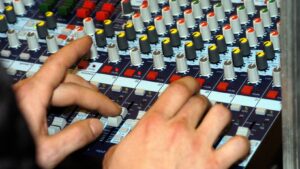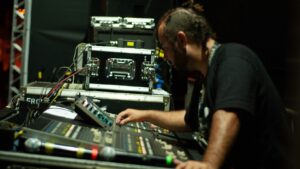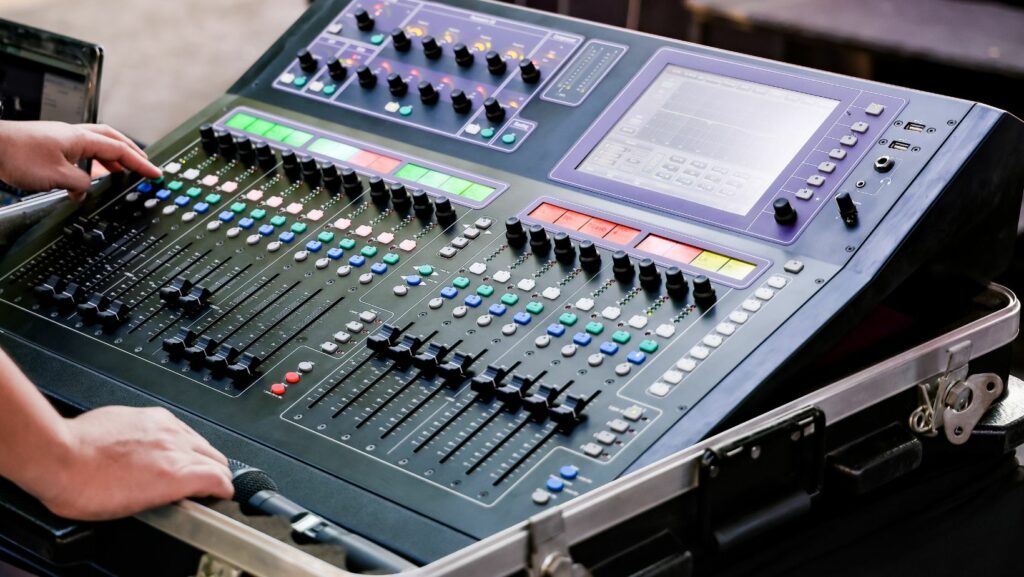In sound engineering, a specialized vocabulary is essential for achieving clarity and precision in audio production. Sound engineers use this terminology to communicate effectively while manipulating audio elements, ensuring that every note resonates with the desired quality. Understanding these terms is crucial for both seasoned professionals and newcomers, as it enhances communication and empowers informed decision-making in the production process.
Sound Engineering Terms

Sound engineering encompasses both technical and creative aspects of capturing, mixing, and reproducing audio. Professionals in this field utilize specialized equipment and software to ensure high-quality production across various mediums, including music, film, television, and live performances.
- Amplitude: Measures the strength of sound; higher amplitude results in louder sounds.
- Frequency: Refers to the number of sound wave cycles per second, measured in Hertz (Hz), determining pitch.
- Decibel (dB): Quantifies sound intensity and measures levels of loudness.
- Gain: Represents the increase in signal strength, typically adjusted at the input stage for optimal clarity.
- Equalization (EQ): Adjusts specific frequency components within an audio signal to enhance balance.
- Pan: Describes the distribution of sound across the stereo field, allowing directionality to left or right speakers.
- Compression: Reduces the dynamic range of audio signals, achieving a balanced output by leveling high and low volumes.
- Reverb: Imitates natural acoustics to create depth and fullness in sound.
- Phase: Refers to the alignment of sound waves, with proper phase preventing cancellation and maintaining quality.
- Signal-to-Noise Ratio (SNR): Compares the level of a desired signal to background noise; a higher ratio indicates clearer audio.
These foundational terms form the core vocabulary that supports effective audio capture and manipulation.
Advanced Sound Engineering Terminology
Advanced terminology enhances production precision and is essential for professionals looking to refine their expertise:

- Phase Cancellation: Occurs when two sound waves of the same frequency negate each other, which can reduce overall sound quality; crucial for mixing.
- Dynamic Range Compression: Reduces the gap between the softest and loudest parts of an audio signal, affecting the perception of detail and texture in sound.
- Harmonic Distortion: Refers to changes in sound produced when harmonics are added to the original audio signal; while often viewed negatively, it can add warmth and character.
- Sound Localization: Involves determining the origin of sound in three-dimensional space, essential for creating immersive audio experiences in surround sound and virtual reality.
- Binaural Recording: Utilizes two microphones to capture audio as it is heard by human ears, providing a spatially rich experience through headphones.
- Frequency Response Curve: A graph depicting how an audio device reproduces sound frequencies, helping engineers adjust settings for accurate reproduction.
Mastering these advanced terms empowers sound engineers to create nuanced, professional-quality audio.
Understanding Signal Flow
Signal flow describes the path audio signals take from input to output, forming the backbone of effective sound engineering. Understanding this flow ensures smooth transitions and optimal audio processing.

- Input Devices: Microphones and instruments convert acoustic sound into electrical signals, starting the signal flow.
- Mixing Console: Routes signals, adjusts levels, applies EQ, and manages effects, crucial for shaping the overall sound.
- Signal Processing Units: Modify audio signals using effects like reverb, delay, and compression to refine quality.
- Amplifiers: Boost audio signals to power loudspeakers and headphones, maintaining integrity through amplification.
- Output Devices: Speakers and monitors reproduce audio for audiences, requiring balanced signals for accurate playback.
- Monitoring and Feedback: Engineers monitor signals throughout the flow with headphones or meters, ensuring consistent quality.
Understanding signal flow is vital for achieving professional audio. By mastering these components, sound engineers can optimize each stage for superior output.
Conclusion
Sound engineering is a dynamic field that requires a deep understanding of both basic and advanced terminology. Mastering terms like gain, EQ, phase cancellation, and dynamic range is essential for effective communication and high-quality audio production. This foundational knowledge empowers sound engineers to create intricate soundscapes that meet industry standards and audience expectations, ultimately enhancing their skills in this evolving field.

